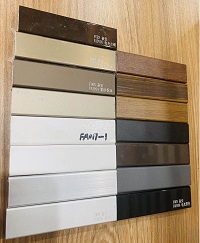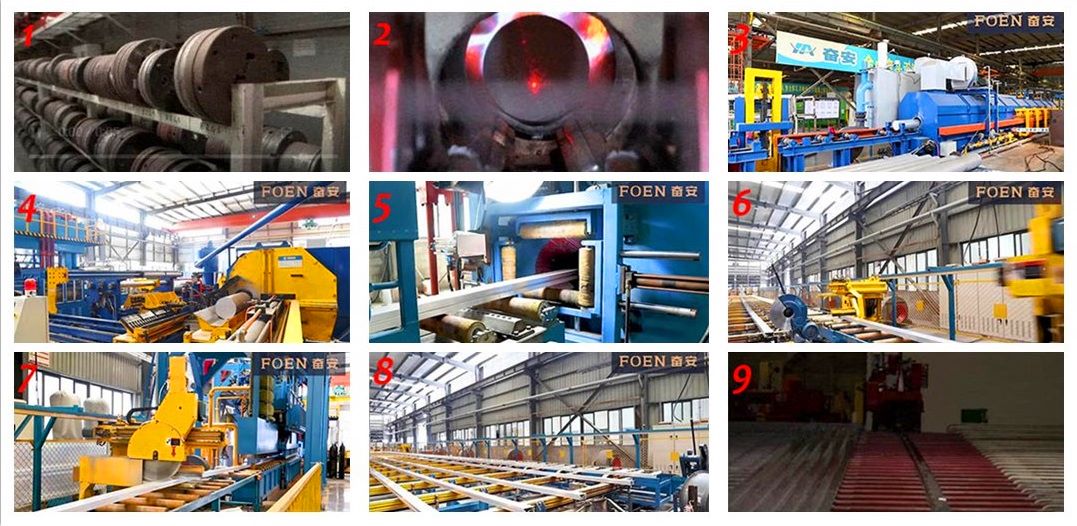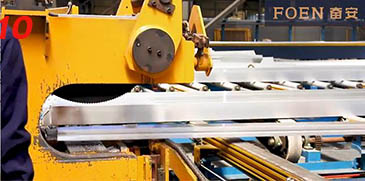The use of
aluminum extrusion in product design and manufacturing has increased significantly in recent decades.
According to a recent report from Technavio, between 2019-2023 the growth of the global aluminum extrusion market will be accelerating with a Compound Annual Growth Rate (CAGR) of almost 4%.
Perhaps you’ve heard of this manufacturing process and are wondering what it is and how it works.
What is Aluminum Extrusion?
Aluminum extrusion is a process by which aluminum alloy material is forced through a die with a specific cross-sectional profile.
Aluminum extrusion can be likened to squeezing toothpaste from a tube.A powerful ram pushes the aluminum through the die and it emerges from the die opening.When it does, it comes out in the same shape as the die and is pulled out along a runout table.At a fundamental level, the process of aluminum extrusion is relatively simple to understand.
On top are the drawings used to create the dies and on the bottom are renderings of what the finished aluminum profiles will look like.

The shapes we see above are all relatively simple, but the extrusion process also allows for the creation of shapes that are much more complex.
How many Process?
Let’s look at below Aluminium Art. It is not only a beautiful painting,which includes the many steps of aluminium extrusion.(mould making-aluminium liquid-aluminium bar-aluminium extrusion-surface treatment)
1): The Extrusion Die is Prepared and Moved to the Extrusion Press
First, a round-shaped die is machined from H13 steel. Or, if one is already available, it is pulled from a warehouse like the one you see here.
Before extrusion, the die must be preheated to between 450-500 degrees celsius to help maximize its life and ensure even metal flow.
Once the die has been preheated, it can be loaded into the extrusion press.
2): An Aluminum Billet is Preheated Before Extrusion
Next, a solid, cylindrical block of aluminum alloy, called a billet, is cut from a longer log of alloy material.
It is preheated in an oven, like this one, to between 400-500 degrees celsius.
This makes it malleable enough for the extrusion process but not molten.
3) The Billet is Transferred to the Extrusion Press
Once the billet has been preheated, it is transferred mechanically to the extrusion press.
Before it is loaded onto the press, a lubricant (or release agent) is applied to it.
The release agent is also applied to the extrusion ram, to prevent the billet and ram from sticking together.
4)The Ram Pushes the Billet Material into the Container
Now, the malleable billet is loaded into the extrusion press, where the hydraulic ram applies up to 15,000 tons of pressure to it.
As the ram applies pressure, the billet material is pushed into the container of the extrusion press.
The material expands to fill the walls of the container
5)The Extruded Material Emerges Through the Die
As the alloy material fills the container, it is now being pressed up against the extrusion die.
With continual pressure being applied to it, the aluminum material has nowhere to go except out through the opening(s) in the die.
It emerges from the die’s opening in the shape of a fully-formed profile.
6)Extrusions are Guided Along the Runout Table and Quenched
After emerging, the extrusion is gripped by a puller, like the one you see here, which guides it along the runout table at a speed that matches its exit from the press.As it moves along the runout table, the profile is “quenched,” or uniformly cooled by a water bath or by fans above the table.
7)Extrusions are Sheared to Table Length
Once an extrusion reaches its full table length, it is sheared by a hot saw to separate it from the extrusion process.
At every step of the process, temperature plays an important role.
Although the extrusion was quenched after exiting the press, it has not yet fully cooled.
8)Extrusions are Cooled to Room Temperature
After shearing, table-length extrusions are mechanically transferred from the runout table to a cooling table, like the one you see here.The profiles will remain there until they reach room temperature.
Once they do, they will need to be stretched.
Extrusions are Cooled to Room Temperature
After shearing, table-length extrusions are mechanically transferred from the runout table to a cooling table, like the one you see here.
The profiles will remain there until they reach room temperature.
Once they do, they will need to be stretched.
9)Extrusions are Moved to the Stretcher and Stretched into Alignment
Some natural twisting has occurred in the profiles and this needs to be corrected.To correct this, they are moved to a stretcher.Each profile is mechanically gripped on both ends and pulled until it is fully straight and has been brought into specification.
10)Extrusions are Moved to the Finish Saw and Cut to Length
With the table-length extrusions now straight and fully work-hardened, they are transferred to the saw table.
Here, they are sawed to pre-specified lengths, generally between 8 and 21 feet long. At this point, the properties of the extrusions match the temper.
What Happens Next?

Surface Finishing: Enhancing Appearance and Corrosion Protection
The two main reasons to consider these is that they can enhance the appearance of the aluminum and can also enhance its corrosion properties. But there are other benefits as well.
For example, the process of anodization thickens the metal’s naturally-occurring oxide layer, improving its corrosion resistance and also making the metal more resistant to wear, improving surface emissivity, and providing a porous surface that can accept different colored dyes.
Other finishing processes such as painting, powder coating, sandblasting, and sublimation (to create a wood look), can be undergone as well.
Aluminum extrusion is a process for creating parts with specific cross-sectional profiles by pushing heated alloy material through a die.It is an Important Manufacturing Process.



 Surface Finishing: Enhancing Appearance and Corrosion Protection
Surface Finishing: Enhancing Appearance and Corrosion Protection online service
online service +86 13696864883
+86 13696864883 sales@foenalu.com
sales@foenalu.com